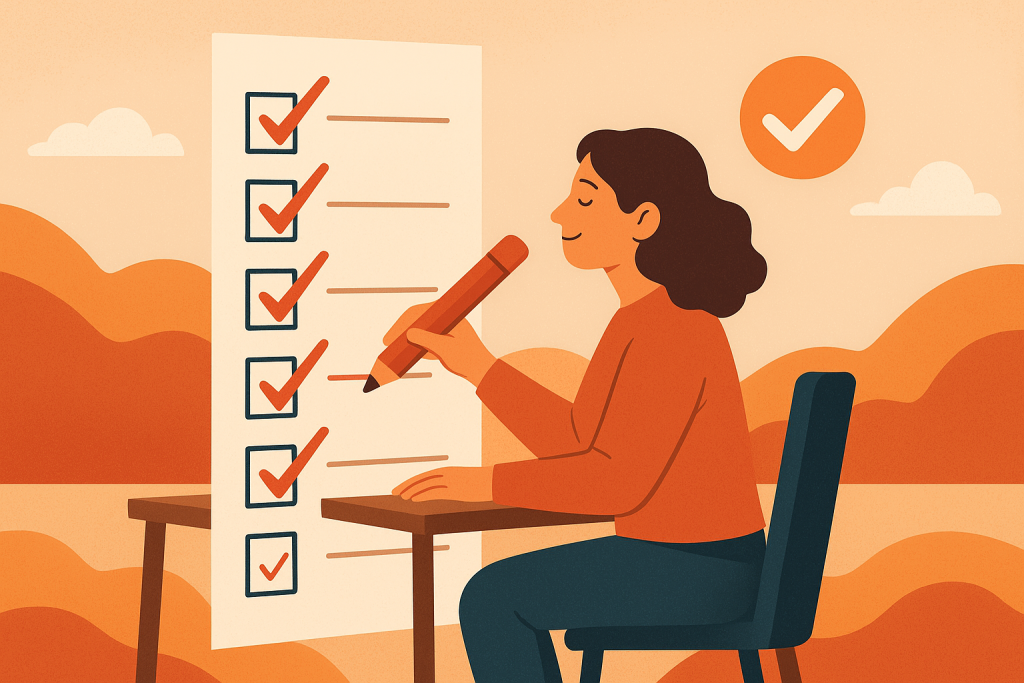In the world of productivity, the psychology of crossing off tiny tasks is lighting up strategies from habit apps to workplace routines. This article explores the emerging trend of micro‑tasking, explaining why it works and how to use it—complete with science-backed insights and practical steps.

1. What happens in your brain when you cross it off
- Dopamine release: Small task completion triggers dopamine—a “mini-reward” that boosts pleasure and motivation.
- Executive function activation: Research from Stanford shows breaking tasks into micro‑steps reduces cognitive load, making your prefrontal cortex more efficient.
- Anxiety reduction: Completing a micro-task clears mental clutter—helping you stay focused and calm.
These tiny wins light up your brain similarly to other rewards—creating a feedback loop to propel you forward.
2. The trend: micro-acts of joy meet micro‑tasking
A UCSF / UC Berkeley study involving nearly 18,000 participants showed that just 5–10 minutes a day of small joyful actions—like expressing gratitude or quick kindness—significantly improved well‑being and stress control. These “micro‑acts of joy” mirror the small-task approach: bite‑size actions, big emotional rewards.
Respected blogs and productivity guides like Atlassian’s “microproductivity” highlight this synergy: tiny actions yield outsized mood and motivation boosts.
3. Beware the “smaller‑tasks trap”
While small wins feel good, there’s a catch: the smaller‑tasks trap—a bias leading you to tackle trivial tasks at the expense of higher-impact work . As FacileThings puts it, unchecked micro‑tasks can make you feel productive while leaving real priorities untouched.
4. Balancing micro‑tasks and meaningful work
Here’s how to prevent tiny wins from derailing your day:
- Use “implementation intentions”—if‑then planning to anchor micro‑tasks within context.
- Prioritize with structure: Tackle one meaningful task, then allow yourself 2‑minute micro‑breaks. This aligns with Parkinson’s Law—time blocks help prevent scope creep.
- Track purpose and process: Maintain a habit journal or to‑do list that balances micro‑tasks and big goals.
- Monitor precrastination: Don’t confuse crossing off junk tasks with real productivity—overdoing it can lead to stress, inefficiency and burnout .
5. A practical micro‑tasking method
First step: Break it down
Convert big goals into small actions: “Write blog outline” → “Draft blog H1, H2, H3 headings”.
Second step: Time‑box micro‑tasks
Use the 2‑Minute Rule (from GTD): If it takes <2 mins, do it now .
Third step: Set implementation intentions
“If I finish breakfast, then I will draft one blog subtitle.”
Fourth step: Use visual trackers
Use checklists, habit apps, sticky notes—visual progress fuels momentum.
Step 5: Reflect and adjust weekly
Note which micro‑tasks helped vs. which distracted. Refine your system accordingly.
6. Avoiding burnout and decision fatigue
Constant task‑checking can make you fall into ‘toxic productivity’. Experts urge conscious breaks to maintain quality over quantity. Decision fatigue hits after repetitive decisions—one smart solution is limiting choices for micro‑task scheduling and designating calming “micro‑breaks” built into daily routines.
7. Tools that support tiny wins
- Checklist apps: Todoist, TickTick — provide simple checkbox workflows.
- Micro‑habit trackers: Streaks, Habitica — pair small action with visual progress.
- Pomodoro timers: Focus Keeper — alternate 25‑minute work blocks with mini-breaks.
- Bullet journals: Customize spreads to combine micro‑tasks with goal tracking and reflection.
8. Final takeaways
- Crossing off small tasks smooths the path to productivity by delivering dopamine, improving focus, and cutting anxiety.
- The micro-acts-of-joy trend confirms that small, deliberate actions shape mindset and well‑being.
- Be wary of the smaller‑tasks trap—strategic planning keeps priorities in check.
- Use tools and strategies to balance tiny wins with meaningful progress.
Conclusion
The psychology of crossing off tiny tasks gives us more than just motivation—it shapes productivity habits, anchors our attention, and supports mental health. Get smart: embrace micro‑actions as part of a bigger plan, not in isolation. That’s how small jot-downs make a lasting difference in how you work and feel.
References
Atlassian (n.d.) The Psychology of Checklists: Why Setting Small Goals Motivates Us to Accomplish Bigger Things. Available at: https://www.atlassian.com/blog/productivity/the-psychology-of-checklists-why-setting-small-goals-motivates-us-to-accomplish-bigger-things (Accessed: 19 June 2025).
Medium (2023) Harnessing the Power of Microtasks: A Comprehensive Guide to Enhancing Focus and Productivity. Available at: https://medium.com/get-focused/harnessing-the-power-of-microtasks-a-comprehensive-guide-to-enhancing-focus-and-productivity-a44a10606b87 (Accessed: 19 June 2025).
Gollwitzer, P. M. and Sheeran, P. (2006) Using Implementation Intentions to Promote Action. Psychological Bulletin, 132(2), pp. 191–220. Available at: https://www.ncbi.nlm.nih.gov/pmc/articles/PMC6440859/ (Accessed: 19 June 2025).






